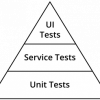test techniques
 |
Visual Regression Testing: A Critical Part of a Mobile Testing Strategy Despite our best efforts to replicate customers' behavior in our test automation suites, teams often forget about nonfunctional requirements. An important one is visual perception—how users see and feel each application they use. Visual regression testing can fill a significant gap in user experience expectations. |
|
 |
2 Quick Wins for Building Context in Testing Testers fill in their assumptions about the project, domain, and technology with things they learn while testing and while talking with people. Sometimes the information they learn is good, but sometimes they miss something important. Here are two quick wins for filling in those assumptions with good information. |
|
 |
6 Steps to Achieve Realistic, Reliable Load Testing Simulating real users’ behavior gives you a transparent picture of your software's load capabilities. To reproduce users' actions accurately, you can use a request flow design from when the system is in the production environment. Here are six steps for achieving the most realistic load for your load testing process. |
|
 |
Integrating Threat Modeling into Agile Development Threat modeling helps you determine where to focus your security testing efforts when building your app. But people often wonder how it can fit into their existing agile software development process. Here are three things you can do to integrate threat modeling into your agile workflow, either early on or mid-project. |
|
 |
Merging New Codeless Test Automation with Your Existing Code-Based Test Scripts Adopting a codeless solution can be an amazing boost to quality, productivity, and tester career growth, but in most organizations, such test suites will have to be merged into existing code-based test scripts. To succeed, developers, testers, and management all should consider the differences between the two options. |
|
 |
Top 10 TechWell Insights Stories of 2018 Many teams are embracing new practices, and several of last year's most-read stories reflect that, with topics such as AI, DevOps, and continuous testing. But it looks like lots of teams also want to get back to basics, because guides to tried-and-true agile and testing methods also ranked high. Check out the roundup. |
|
 |
Protect Your Software through Threat Modeling Many software organizations are overwhelmed with a laundry list of vulnerabilities. They often have no idea where to start, how to determine prioritization, and whether or not those vulnerabilities accurately represent the threats to our applications, users, and data. Threat modeling is a simple yet effective solution. |
|
 |
5 Reasons You Should Have More Unit Tests The test pyramid is a valuable visual in agile. In particular, it argues that unit tests should make up the majority of tests, and while agile teams recite this principle, it is often not clear why it is so important. Here are five reasons unit tests should make up the majority of tests written for an application. |







